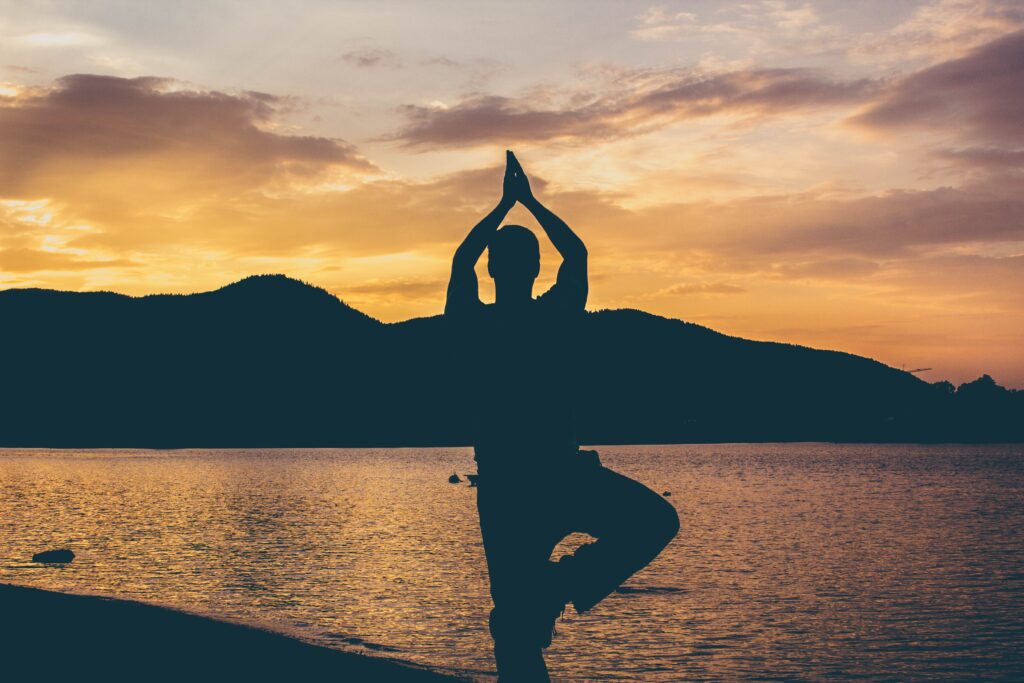Tension can be a big obstacle to happiness and self-realization. Often we put a lot of effort to achieve a particular goal, but all the time we feel that despite all our efforts, we are missing something.
In our quest to be successful, we set ourselves many goals. However, not only the result is the criterion of success, but also the way of their implementation. Of course, purposefulness is a wonderful and necessary quality of a person. However, our mind’s preoccupation with a materialistic goal often ignores the needs of our body and spirit.
For a happy life, it is very important that we cultivate a culture of attentive treatment of ourselves and others. We need to notice first signs of tension and be able to cope with them in a healthy way. To do this, you first need to understand the sources of tension.
Causes of tension and stress
1. Inadequate perception of the world
Our way of thinking is not in harmony with our external environment. The lack of flexible thinking causes a conflict between the desired life and the present reality. This causes dissatisfaction and tension in the mind and body.
2. Negative emotions
Fear, hatred, dislike, jealousy, and the like. They accumulate from childhood and have a negative impact in everyday life (fear of the dark, inferiority complex, etc.).
If we perceive unpleasant situations with an internal protest and a negative emotion, a conflict arises in our mind. Our nervous system reacts to this with increased muscle tension, as if preparing to take action to eliminate this conflict. As a result, all internal organs also work more intensively.
This leads to a constant waste of our vital energy and an excessive release of adrenaline into the blood. If a person stays in this state for a long time, it can lead to diseases of the internal organs and a weakening of the immune system.
Therefore, as soon as we notice negative behavioral tendencies behind us, we should think about how to change this state. How to replace tension with relaxation?
Relaxation is the release of tension in the mind and body
To achieve deep relaxation and complete recuperation, you need to spend enough time and have the right approach.
Unfortunately, many people get up in the morning still tired and sullen. Because during the night, their minds could not relax and replayed the day’s twists and turns again. In this case, the person in the dream turns, his muscles twitch. As a result, even a long night’s sleep does not help to restore strength, and a person begins a new day with tension.
If this continues, it will develop into chronic fatigue. It is extremely important to notice this and learn to relax your body and mind. After all, a person with a calm mind and a cheerful body looks at all life situations in a completely different way and reacts to them more calmly and carefully. As a result, the effectiveness of the life lived and satisfaction increases.
A person who can fully relax and recover is capable of high concentration and achieving the goal at the right time.
Yoga as the art of relaxation
There are many methods and techniques of relaxation. Yoga has a complex approach, favorably affecting the body and mind. Yoga methods have been tested for centuries and are successfully used in everyday life by people of different countries, genders, ages and faiths. They are simple and effective. However, this can only be understood by experiencing them firsthand.
In order for your yoga practice to be effective, it is important to understand the mechanisms of their impact on the body and mind. Awareness of the biomechanics of yoga practices will bring maximum benefit from their implementation.
Principles of relaxation techniques
-
- We consciously stop thinking about accomplished deeds and problems.
It is necessary to understand that as the necessary information accumulates, the mind itself will give out a solution to the problem that concerns us. This understanding will help you “let go” of many disturbing questions. - We distract the mind from emotionally filled thoughts to neutral thoughts, such as awareness of breathing, body parts, and so on.
- We lie still in Shavasana and mentally relax each part of the body, aware of the sensations experienced in each of them. We observe our breathing. We do not pay attention to the thoughts that appear. In this way, our endless cycle of thinking is suspended and the mind relaxes.
- We consciously stop thinking about accomplished deeds and problems.
Purposeful tension relief of the muscles
Purposeful relaxation of the muscles allows our nervous system to rest. As a result, muscle tone and the work of the endocrine system are normalized. Stress and fear go away.
The more we relax our muscles and remain motionless, the less we become aware of the body. It is as if the consciousness is disconnected from the body. This feeling gives the whole body a sense of lightness and joy. In the deeper stages of relaxation, the cells of the entire body get relaxed and regain strength.
All yoga practices are aimed at increasing our awareness, relaxation and control over the mind. Having experience in one area, we are able to use it in other areas of life. So we can use the skill of relaxation and mind control in yoga practices in our daily lives. In this way, yoga can improve the quality of our lives.
In everyday life, gradually replace negative reactions with neutral, calm and creative ones. It should be understood that it is impossible to replace all the undesirable qualities at once. Do not get upset and do not engage in self-flagellation. Stable practice and patience will definitely contribute to continuous favorable development.

